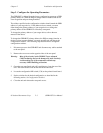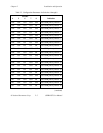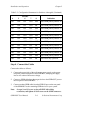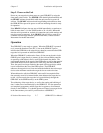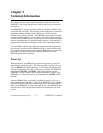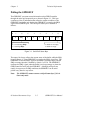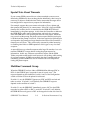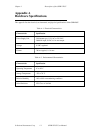Technical Information Chapter 3
GPIB-BUF User Manual 3-4 © National Instruments Corp.
When receiving data while addressed as a GPIB Listener, the GPIB-BUF
buffers the state of the EOI* signal line along with the data byte it
corresponds to using an additional on-board RAM module. Therefore, the
GPIB-BUF is able to maintain the EOI status with each byte received even
when the DMA Controller is transferring data directly to memory. In this
way, the GPIB-BUF can accept multiple occurrences of EOI bytes at full
speed without loss of performance due to special EOI handling techniques.
IFC
Interface Clear (IFC) is used by a GPIB Controller to place an interface
system in a known, quiescent state. The function of the IFC* signal is to
halt current operations on the bus by unaddressing all Talkers and Listeners,
and disabling serial polls.
The GPIB-BUF asserts IFC* on the GPIB OUT port once at power-up for
500 µs. The action of asserting IFC* for at least 100 µs initializes the GPIB
link to the target device and establishes the ability of the GPIB-BUF
to address the target device. Any other response to IFC* is not defined by
the IEEE 488 specification and is specific to the target device.
If the GPIB-BUF detects IFC* asserted on the GPIB IN port, it immediately
unaddresses itself (unless it is in listen-only mode) and stops accepting data.
IFC* does not clear the GPIB-BUF data buffer or assert IFC* on the GPIB
OUT port since either of these operations aborts any current data transfer
taking place to the target device. Device CLear (DCL) or Selected Device
Clear (SDC) should be used to terminate an ongoing data transfer to the
target device.
REN
Remote Enable (REN) is asserted by the system Controller and is used to
enable GPIB devices to be placed in the remote programming mode
(programmable via the GPIB). The GPIB-BUF always asserts REN* on the
GPIB OUT port. REN* need not be asserted on the GPIB IN port for the
GPIB-BUF to operate.



